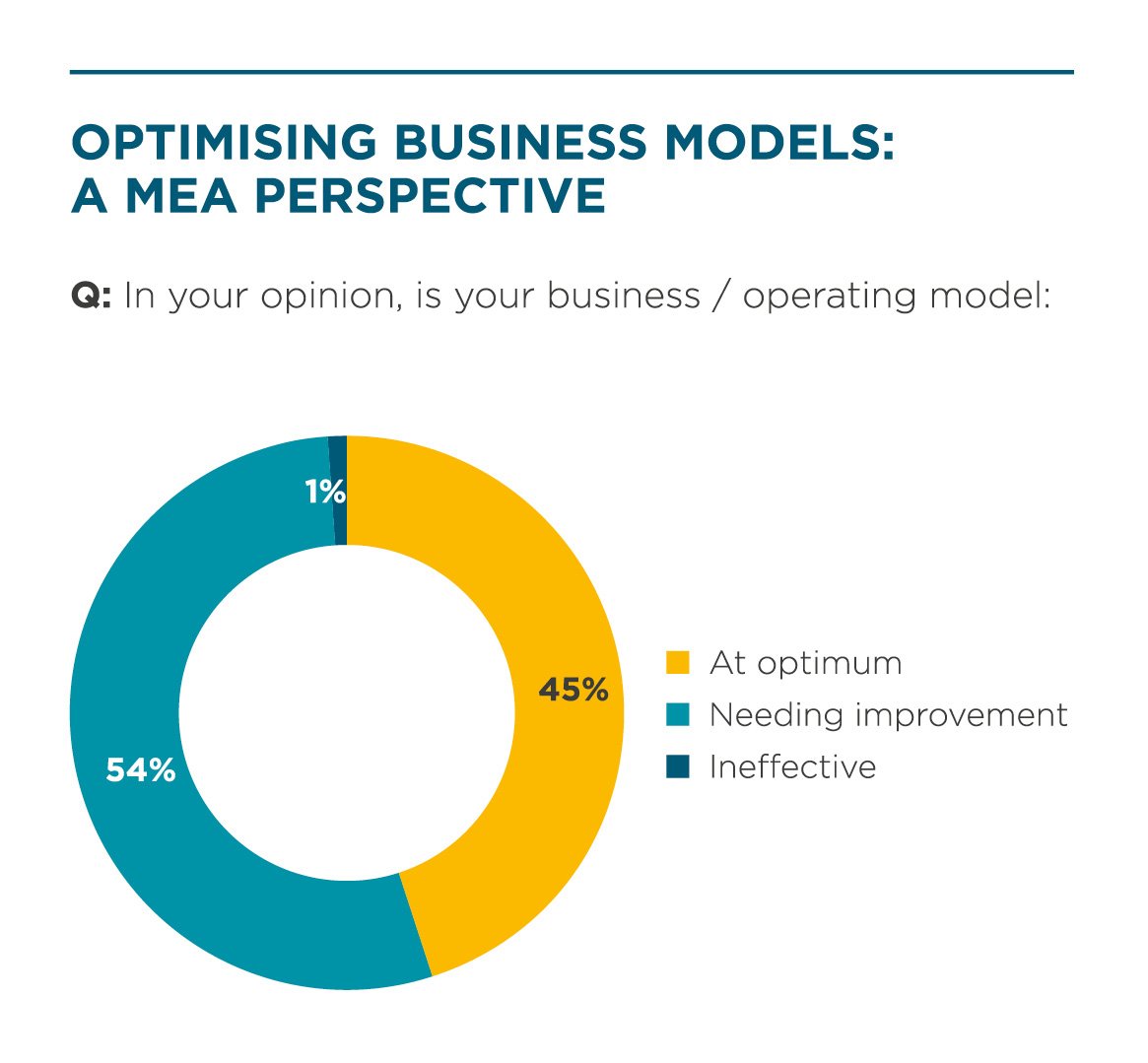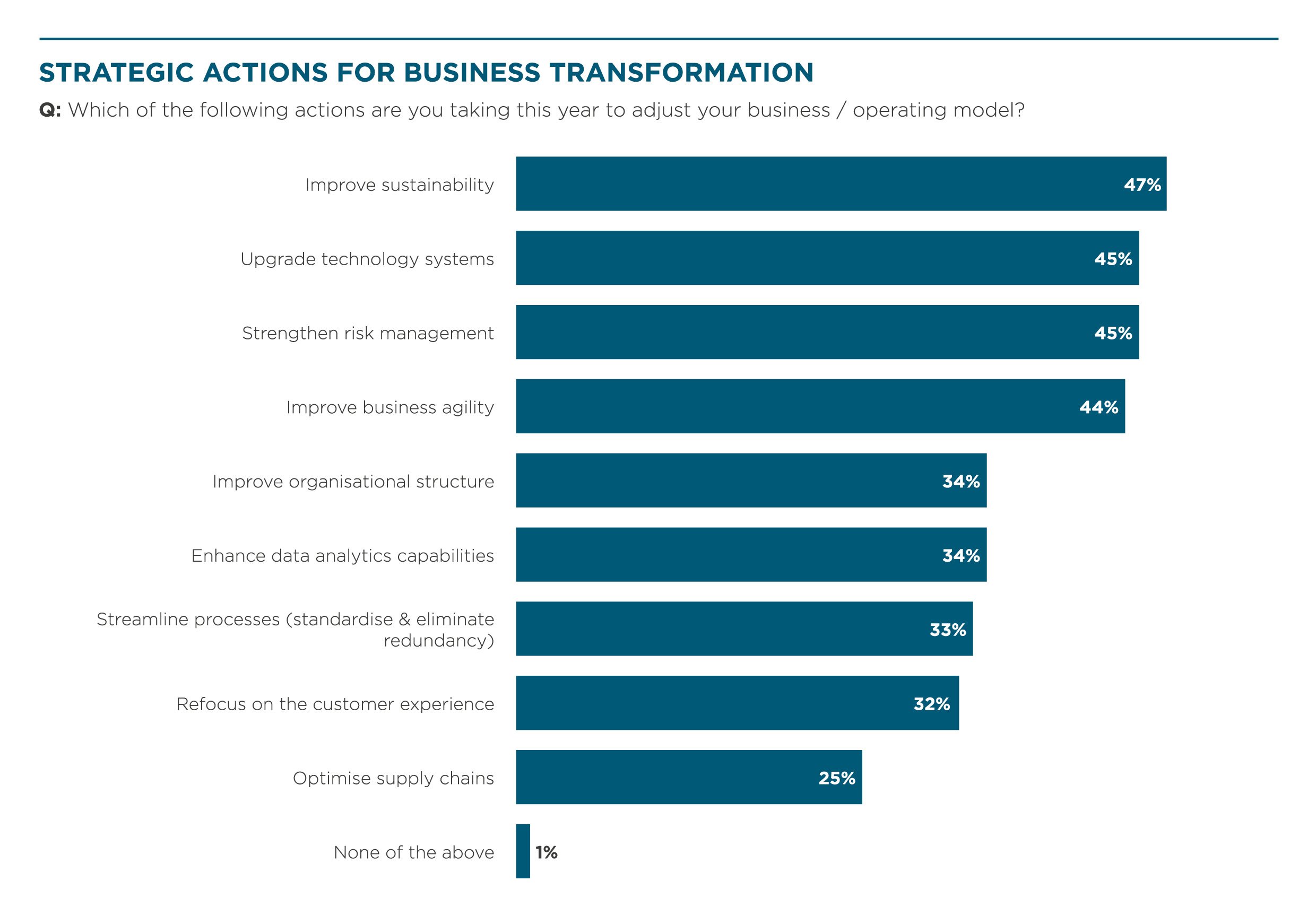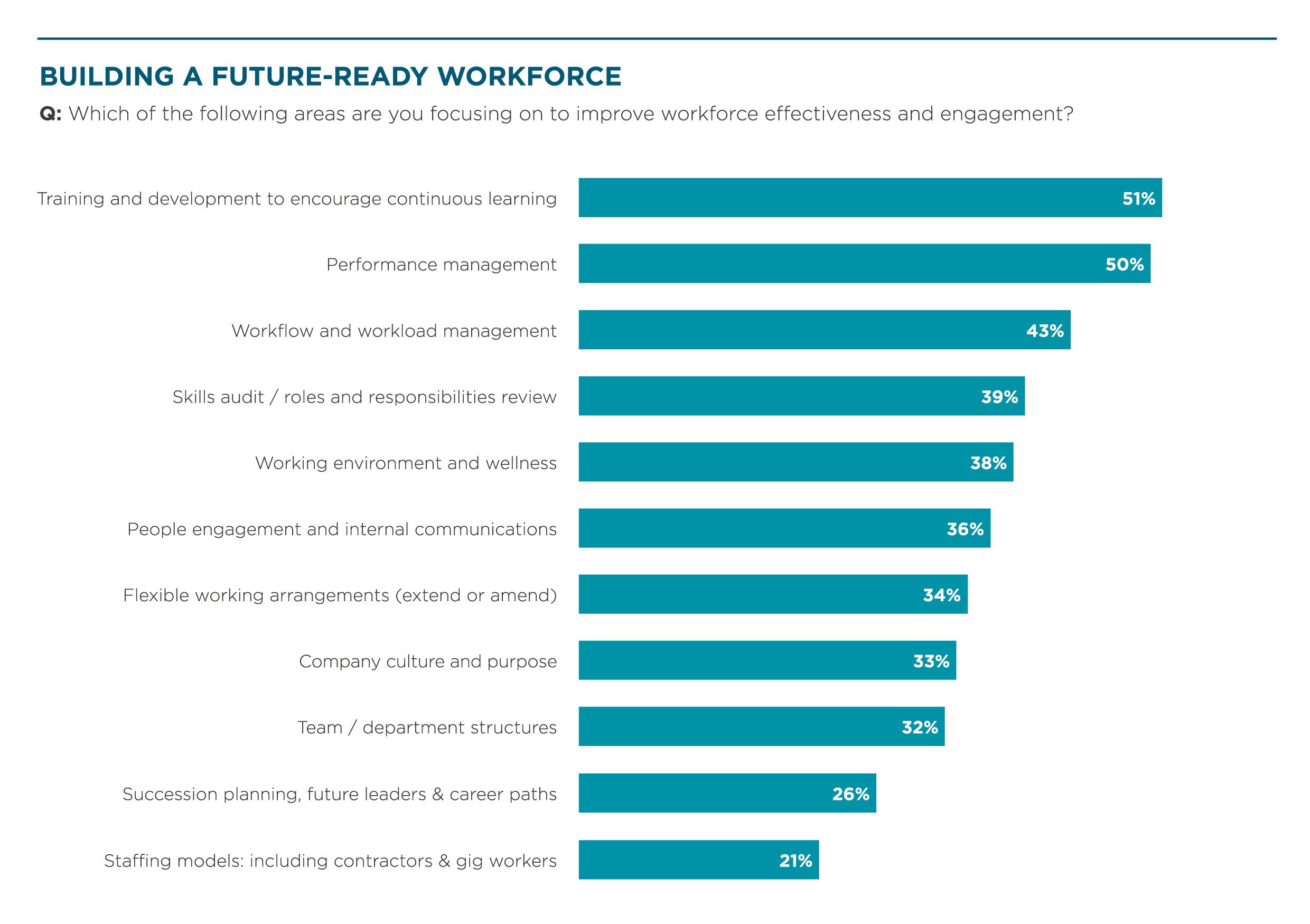Middle East & Africa: Strategies for resilience and innovation
HLB Survey of Business Leaders 2025Middle East and Africa (MEA) leaders look forward to the year ahead. 71% are confident global growth will increase in 2025. Africa hosts three-quarters of the world's top 20 fastest-growing economies, with half of the continent's countries projected to have GDP growth rates above 5% in 2025. Gulf Cooperation Council (GCC) GDP growth rates are expected to double to 4.2% in 2025, driven by technology and non-oil sectors.
A positive macro-climate boosts business confidence. 98% of leaders are certain to increase company revenues this year. The fraction of ‘very confident’ respondents increased by 12 percentage points from 2024.
However, risks are also elevated. Compared to global peers, MEA leaders face a more intense risk radar. Over 70% are preoccupied with 11 risk factors, including geopolitical tensions, cybersecurity, inflation, changes in consumer behaviour, and regulatory landscape.
Resource cost concerns rose 18 percentage points from last year, likely due to trade tensions and Horn of Africa security issues. 77% of leaders feel pressed by economic uncertainty, up 24 points from last year. However, these factors haven’t stopped leaders from achieving peak profitability last year through improvements to their operating model, people management, and innovation capabilities.
Market-driven restructuring
MEA has been a hotbed of transformations, with several countries making leaps in economic and digital growth despite tough economic conditions. GCC countries are accelerating economic diversification from hydrocarbon revenues to service-oriented economies, driven by tourism, logistics, finance, and renewable energy sectors.
Many African countries have improved their fiscal positions, leading to better regional economic stability. Abundant reserves of critical minerals like cobalt and lithium present major growth opportunities, but many are diversifying from commodity- and agro-based economies to new sectors.
Increasing mobile data usage and smartphone penetration have driven growth in new digital sectors like e-commerce, online education, and entertainment.
Naturally, challenges remain on both continents as growth is uneven. Twelve of the twenty least diversified economies globally are African. Maghreb and Middle Eastern countries face political and security challenges, and the Sahel struggles with managing the impacts of climate change. However, MEA leaders know how to overcome hurdles. An impressive 45% rank their operating model as ‘at optimum’. That’s 2.5X higher than globally.

Nonetheless, leaders seek further improvements. 45% plan to upgrade their technology systems, with 79% of this group aiming to deploy AI. Overall, 32% of respondents identify as AI innovators, who are already widely using or actively preparing to adopt the technology across functions.
AI tools enable leaner, faster workflows through intelligent automation and better data analytics — and greater operating efficiencies are what 52% of leaders want to achieve this year. In addition, algorithms can drive revenue growth.
Balasubramannaim Pillai of HLB Hamt is certain that even more AI-driven offerings will soon emerge in the region. “A few years ago, AI was only implemented in Fortune 100 or Fortune 500 companies. Now the technology is in the ‘open market’ and accessible to anyone due to lower adoption costs and complexities.”
Leaders also realise there’s yet another important component to their operational resilience: Cybersecurity. Concerns about cyber risks are at 79%, up by 21 percentage points from 2024.
The rise in economic growth and rapid digitisation have made regional businesses prime targets for cybercriminals. In MENA, attacks on critical energy infrastructure, government services, and financial services rose substantially in 2024
Among 45% of leaders in the MEA region who aim to strengthen their risk management this year, 73% plan to use AI.
“There are a lot of private and public digitisation projects underway in Liberia and in neighbouring countries. For example, the immigration system or the National Identification Registry. However, governments are lagging behind on creating frameworks for cyber protection”, says Ernest Parker of HLB Liberia.
Lack of regulatory guidance and oversight puts businesses at a further disadvantage. “I’m seeing more businesses entering the digital economy. However, many are fully unaware of the cyber-risks they may encounter,” adds Charles Lupiya of HLB Zambia.
Soundly, leaders recognise the critical importance of cyber-safety. 66% plan to increase investments in enhancing their cybersecurity and IT infrastructure in the next twelve months.

Unlocking full talent potential
MEA has a clear demographic advantage: a predominantly young workforce and steady population growth. Yet, ‘access to talent’ was among the sharpest rising risks from 2024 (+19 percentage points).
Similar to other regions, workforce digital literacy in MEA varies a lot. Across the Middle East, Turkey, and Africa, over half of employees miss certain digital skills to effectively work with computers and other digital devices. Uneven internet coverage and power supply limit job creation and economic growth, leaving populations vulnerable. Youth unemployment in MENA is at 24.5% — the highest globally. Greater adoption of digital technologies also reduces the number of low-skill and entry-level opportunities.
MEA leaders aim to nurture a new generation of workers. In particular, 50% aim to build programs that encourage continuous learning.
Microsoft Nigeria has launched an AI upskilling program, designed to upskill over 1 million local workers with digital skills. NVIDIA opened a new AI Innovation Hub in Tunis, designed to promote regional innovation and provide training to software engineers across Africa. Google.org, Alphabet's philanthropic arm, announced plans to contribute $15 million to NGOs across MENA to ensure access to AI opportunities.
40% of leaders believe their people are high-performing and engaged. 53% as productive, depending on the circumstances. Workplace productivity combines effective leadership, a strong culture, and well-designed environments. Leaders aim for improvements in all areas.
Half of the leaders plan to focus on performance management (with 66% using AI for this). 43% also seek to improve workload and management, and 38% — workplace environment and wellness.

Admirably, 73% of respondents plan to increase investment in employee upskilling in 2025. 66% also plan to increase staff remuneration in the next 12 months. An engaged, competent, and happy workforce is key to ensuring minimal cultural resistance to operational transformations and promoting more innovative thinking.
Building an innovative future
To grow this year, MEA leaders do not just seek internal transformations. They also seek greater market expansion. 40% plan to launch new products or services. GCC countries have significant middle and upper-middle-class households, with growing purchasing power.
Growing market sizes, paired with increased volumes of cross-border commerce and global services outsourcing is creating new revenue opportunities. However, to access these, leaders will once again need to rev up their innovation engine.
Over 61% of MEA leaders rate their innovation efforts as successful, while 36% rate them as variable. Indeed, we’ve seen many successful countries launching new economic cities, special trade zones, and innovation hubs, offering attractive benefits like tax breaks, simplified regulations, and government-backed infrastructure.
MEA businesses also aim to strengthen their global positioning and access new markets. A quarter aims to improve their brand strength this year. Innovative companies want to stand out by providing exceptional customer experience.
36% of leaders want to improve customer behaviour data analysis (with 79% of these planning to use AI to do so). Another 33% also plan to invest in predictive analytics to better track future trends (and 90% look into AI for that).
Achieving sustainable profit growth
Three-quarters of Profit Accelerators - organisations who have increased their profit margin by >5% over the past 12 months - see themselves as successful innovators, and are 1.5X more likely to rank their operating model as optimum.
While their peers mostly seek to adopt new technologies, they’re focusing on further honing their operating flows to deliver innovation even faster. They also seek leanness in other areas through a combination of technology system updates — a priority shared with their peers — and governance-related improvements.
A commendable 46% of MEA leaders managed to increase their profit margins by five per cent or more over the last twelve months. Discover the strategic secrets behind maximising profit margins; download our in-depth regional report.
Related content

Learn more about our research






